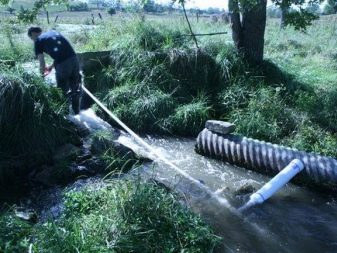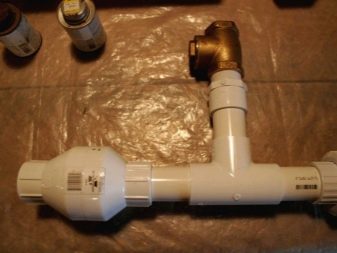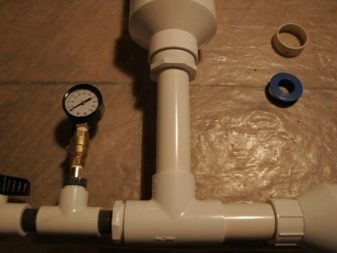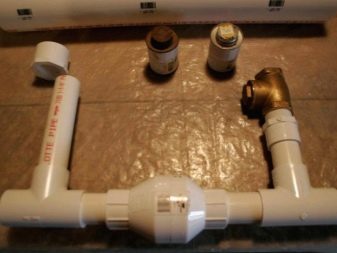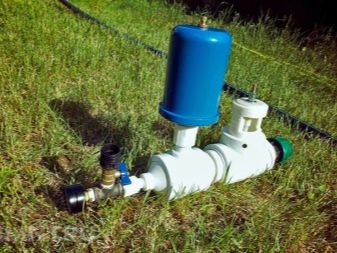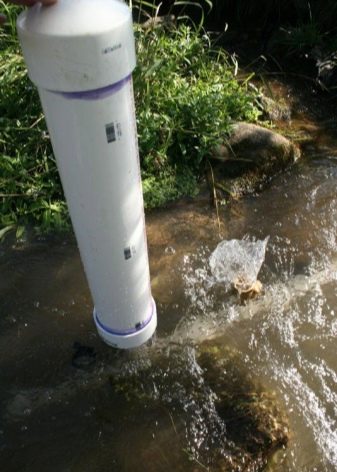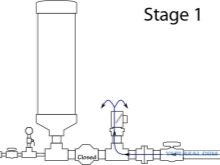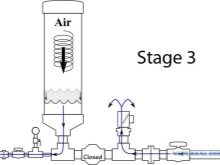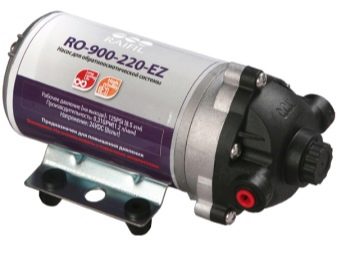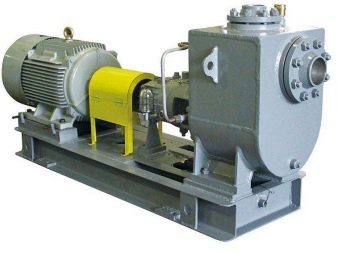Features of water pumps without power
You never know where knowledge on school subjects will be useful to us. Especially in physics. This device, which is built on the knowledge of physics, and will be discussed. This pump is solely a consequence of the development of both human progress and non-standard thinking. He does not need electricity or fuel for work, he doesn’t even need to do anything extra. But the pump is able to give good pressure and raise high columns of water, which many, without understanding, are called deception. Far from it.
Making a water pump
At first glance, such a unit is not credible, because in our understanding, the pumps are somewhat larger and others in general. But in fact, absolutely all the nodes of this unit are working, and not from some kind of fuel, but from the usual laws of physics that pass in the 8th grade.The point here is the difference in pressure created inside such a pump. The valves are set up in such a way that, at a certain pressure, one opens, the other closes. This is very similar to the good old manual-type accordion pump, where with pressure on the acting valve, the air came out, and when it was given, water flowed into the free space.
Basically, such a structure is made of pipes (vinyl chloride). It looks like a straight pipe with valves, revisions and plugs, which are mounted on a wider section of the pipe. The pipes themselves are put either on glue or are soldered together with the help of special equipment.
The widest in this design is a buffer or receiver, which is necessary for pressure equalization and accumulation. On the sides are the entrance issues. But is it worth looking at the other side? No, they are about the same. Only with the condition that the right valve is the inflow of water, and the left - the outlet.
It turns out, the flow of water is fed to the right valve. By the way, instead of valves, you can use conventional ball valves. After that, the water goes to the tee. The tee also divides the flow: one flow goes up to the valve,at a certain pressure that closes, the direct flow goes to the valve that opens when the required pressure is reached. After that there is another tee, but on the receiver, and after that - on the way out. It is also desirable to use a pressure gauge that will show the pressure depending on the installation location. Usually put one gauge on the inflow, but you can also put on the giving valve.
In general, it became clear that water is supplied to the ball valve on the right. Next comes the tee. Tee, splits threads. Up feeds to a valve that closes with sufficient pressure. A direct flow is supplied to the valve, which opens when the desired pressure is reached.
Then, the tee goes again to the receiver and is already on the way out. And, still the manometer, but it can and not be, is not so important.
Self-made version without power is quite possible to make their own hands. If we consider all our recommendations. In this case, do not do without gasoline.
Real good
In fact, it is not exactly a pump, but rather a pressure booster. This is due to the fact that for his work you need a certain pressure. Another type of product is called "hydrophore", because here and there there is a hydraulic lock that opens and closes the valve when a certain pressure is reached.The receiver should always be in an upright position.
According to some tests, the pump quietly takes water from streams and lakes, but not at tremendous speed. For those who often have to go to the river for water, the creation of such a pump is quite a good and thorough occupation.
But it is better to use such a pump not independently, but in tandem with several such pumps: they will not interfere with each other, but the amount of water will be much greater.
Plus, you can combine them at the outlet into one water supply pipe, but the main thing to remember is: the pipe should be two times wider in diameter when there are two such products. This is due to the fact that the basic principle of operation of such a structure may be violated and the pumps will cease to function normally.
The principle of operation of the water pump
Even though it seems something fantastic and looks like a joke, the matter lies in one secret here. The second name of such a pump is “water hammer”, and they work this way: the water goes along the line and as soon as the pressure rises, the outgoing valve closes abruptly, the water goes further by inertia, then inevitably there will be a water hammer that creates a large and excessive pressure able to open the second valve. After that, the water enters the receiver, which will compress the air.
When the pressure drops, the outgoing valve will automatically close and the water will again go through the middle and to the top, after which the water will run to the top.
Types of pumps
Pumps are different, mostly they are powered by electricity, but there are also options for working on other fuels, for example, diesel. Pumps are divided into two groups: volumetric and dynamic. Volumetric pumps have a principle of action such that the liquid enters the working chamber and is displaced from it. They are cyclical and hermetic, and also have the property of self-absorption. Dynamic pumps do not have a working chamber. Still distinguish the pumps for the implementation: mechanical, magnetic discharge, stream and cryogenic. Also distinguish pumps for power, for its intended purpose. But beyond that, there are devices for special jobs, such as pumps for chemical liquids and faecal pumps.
Chemical pumps are needed to pump various liquids, mostly aggressive, which conventional pumps cannot handle. Often, they have adequate coverage. The main areas of application are the petroleum industry and the chemical industry. Often can be found in the paint industry.
Fecal pumps are also used to work in polluted waters and liquids. They differ from the others in that they are designed for much greater viscosity than ordinary ones, and also calmly cope with small average particles, including sand and gravel. Fecal pumps are both submersible and semi-submersible.
To learn how to make a water pump without power supply, see the following video.

